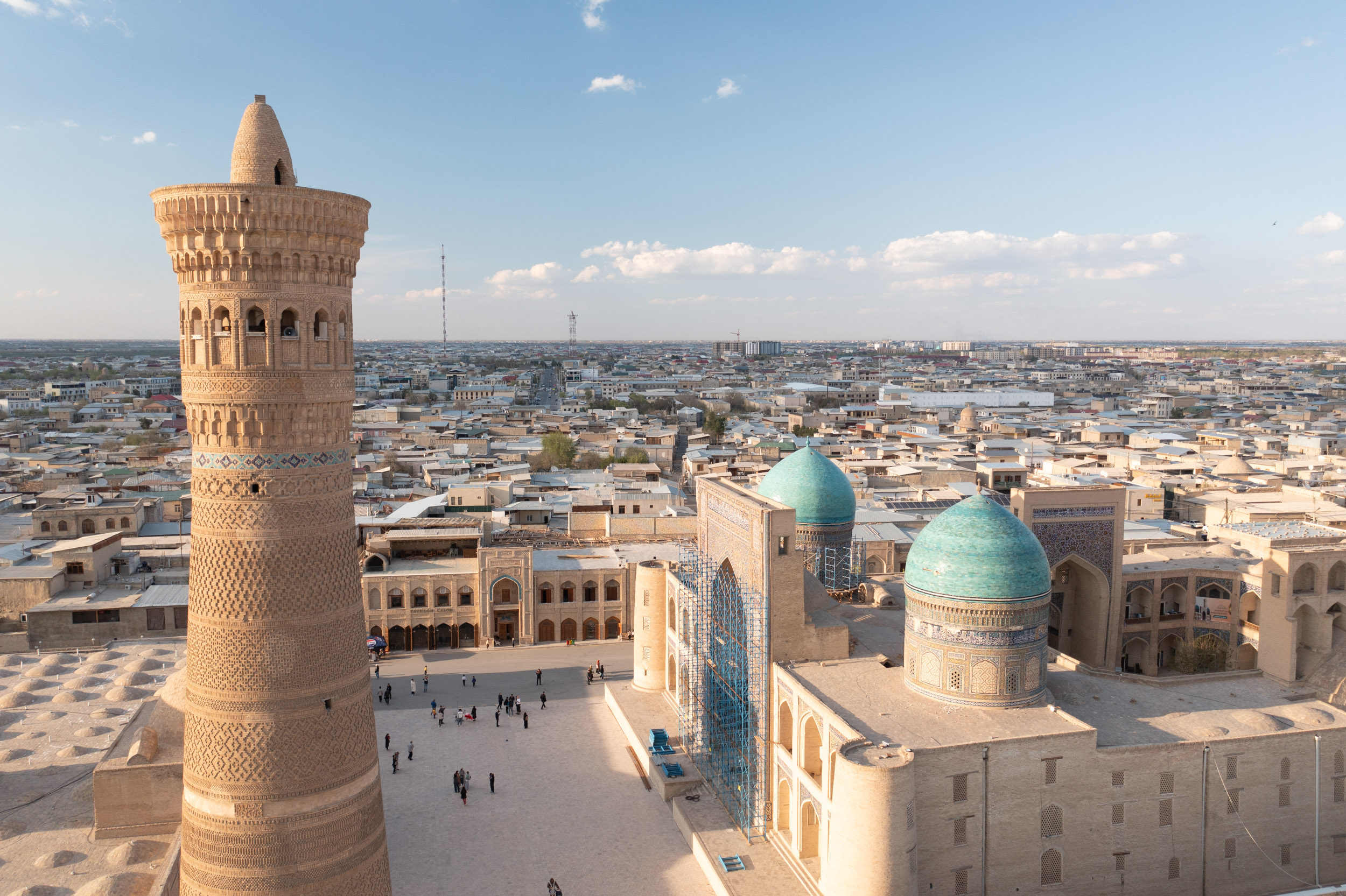
It’s been nearly a whole year since I last wrote a newsletter. With the amount of travel that’s taken place between then and now, it’s hard to know where to start.
I feel that, given the amount of time that’s passed that it’s probably best to start at the beginning of the year when I went to the Dolomites for a week in the winter.
In my last newsletter, I mentioned having to register all of my images with the US Copyright Office before they get published anywhere. It’s a hassle at times, but as of now, I have finally got to the stage where I can publish them within a week or so of returning from a trip.
Just in the last two weeks, I have found a dozen or so companies infringing my copyright. It’s frustrating, but if the lost license fee can be recouped, then all the better. The USA has far better mechanisms for doing so than the UK and Europe.
Anyway, let’s get up to speed with trip reports in as well as future photography workshops and tour dates for those of you that are interested.
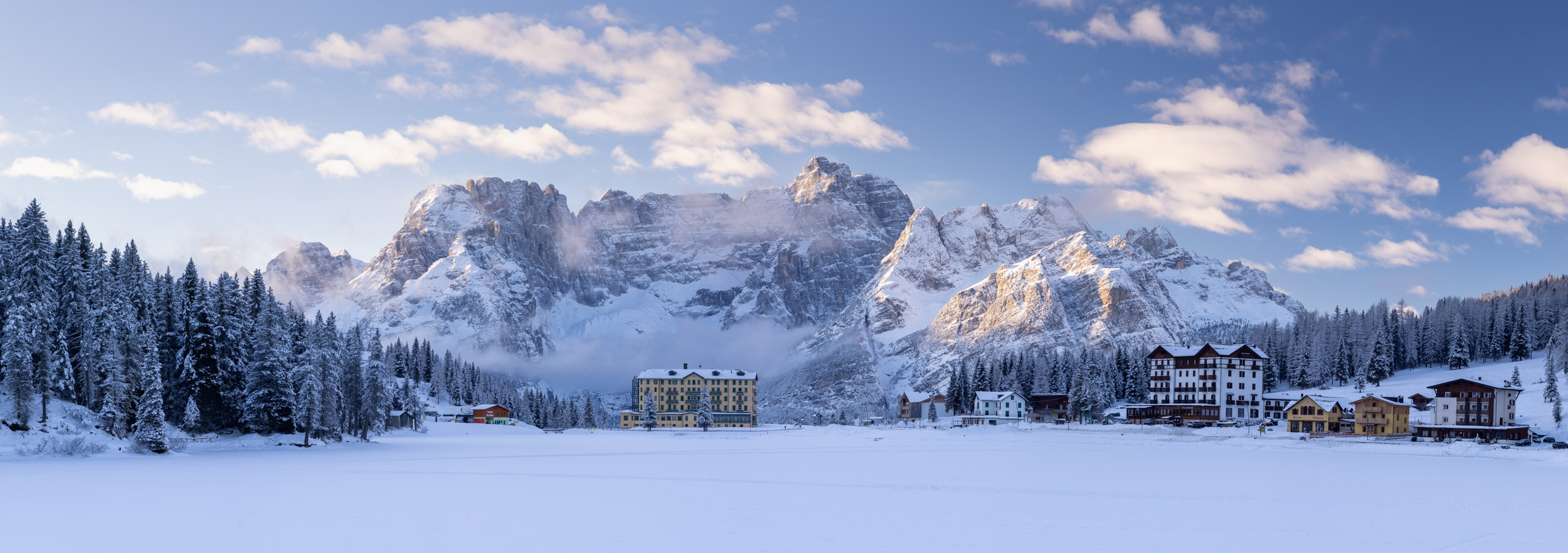
Each year, I run a photography tour to the Dolomites during the autumn, but I also run a photo tour up there in wintertime. Unlike the fall, it is less crowded with photographers but no less spectacular. In fact, I’d argue it’s even more spectacular when you see those jagged snow-covered mountains.
During my regular autumn photography tour, we see two different sides of the Dolomites, and for the winter photo tour, it’s run in the same way. The only thing that we have to be careful of is the roads.
Although car or van hire vehicles are required by law in Italy from November to April throughout the country to have either winter tyres or snow chains, it’s no guarantee that you’ll actually make it up one of the passes.
One particular day saw us leaving our first hotel to head over to the Cortina d’Ampezzo area. It was snowing, and despite the local authorities working to clear the roads, our car just couldn’t make it up Passo Gardena. We had two options. Either drive the long way around or get some snow socks to assist on the icy roads.
For me, client safety is at the top of my list when we are out and about on a photography tour. It just isn’t worth taking any risks and especially when dealing with such icy conditions.
Up until this point, the weather hadn’t been kind to us. There was either icy rain or thick fog covering the mountains, which made shooting extremely difficult. This is, of course, the risk that we all take as photographers when we go somewhere for a fixed period of time.
However, upon arrival near the pass above Cortina d’Ampezzo, the clouds seemed to be parting. I took the decision to go up a cable car that I know, which last run back down is just after the sun has set.
Once at the top, we were greeted with one of the most spectacular scenes. The clouds were clearing from the mountains, and we had gone high enough to get above them and see the peaks being encircled by the fog in the valleys. It was truly stupendous.
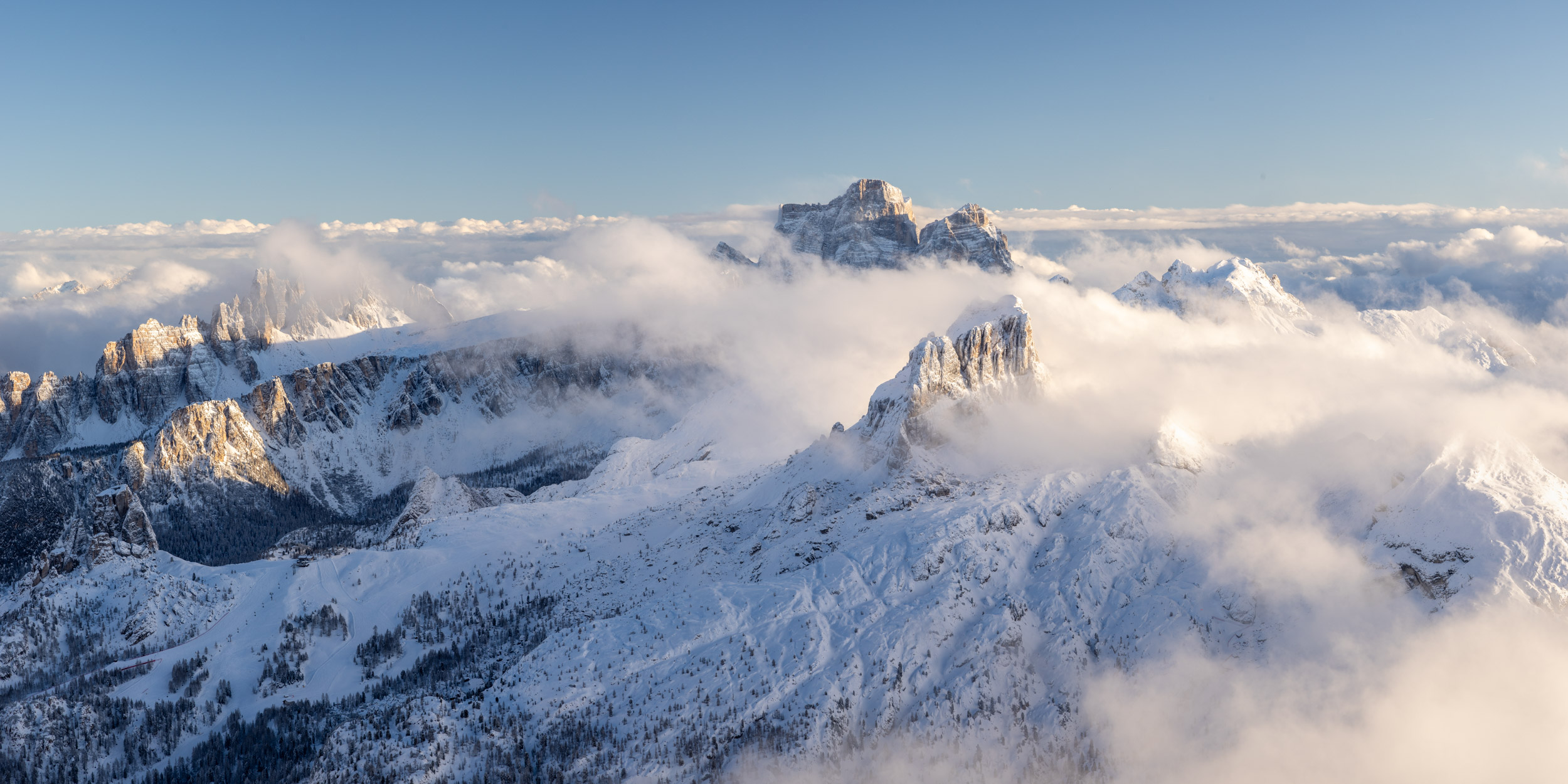
When I was living in France, I developed a huge interest in the Gothic and Romanesque buildings that lay throughout the country. These Medieval wonders from our past are truly stunning when you stop and look upon them.
In England, there was the Reformation, which saw various buildings dismantled and left to ruin. Some of these, though, are still stunning even in their ruinous state or repair.
But there are still a number of beautiful examples of English Gothic architecture, and at times mixed with Romanesque, that you can find around the country.
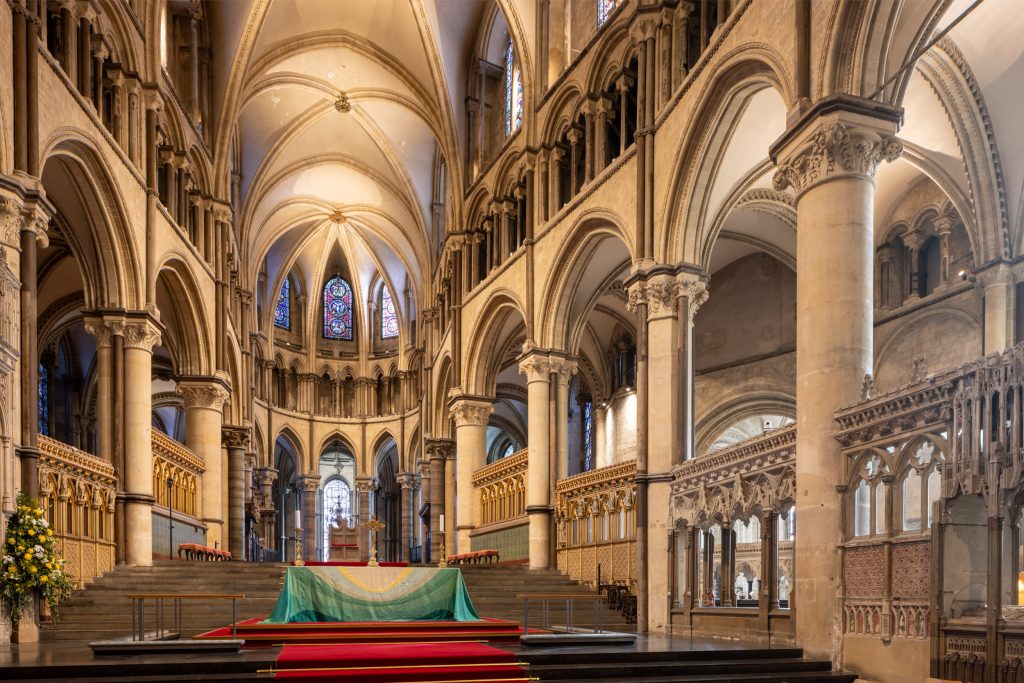
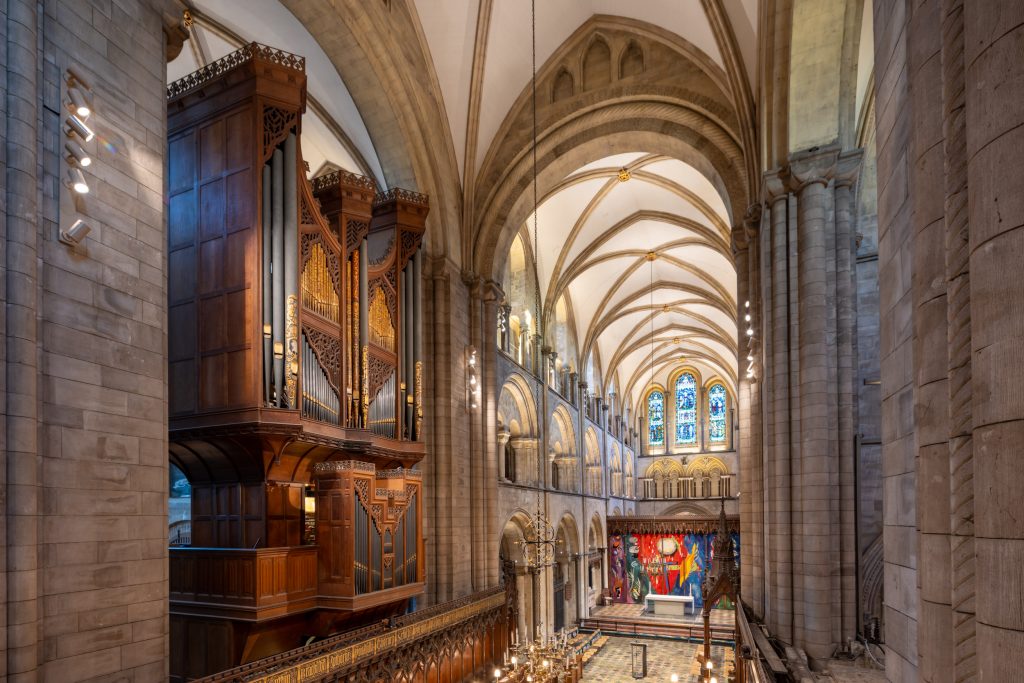
A personal project of mine is to photograph all of the English cathedrals from this period that are still standing. I’ve already done a lot of them, but as I was to be travelling up and down the UK for 4 weeks in January and February, I tried to finish off what I hadn’t done.
Emails were sent out to the remaining cathedrals on my list. Some of them were undergoing work, and I felt it wasn’t a good use of my time to be trying to hide, photographically, scaffolding such as in the case of Bristol Cathedral, whose choir was being renovated. Some agreed to help me out, and others tried to charge what can only be described as an extortionate fee to photograph their buildings. How much? Try one asking me for £750 plus VAT for just one hour!!! Uh, no thanks.
Out of the ones that I asked, Canterbury, Chichester and Worcester agreed to help me. So I duly set about working out suitable dates to be able to go in and do what I wanted to do. That is to make these magnificent buildings look their best.
One thing I like to be able to do in a cathedral, church, or abbey is go up high to see if I can capture the shot looking down the nave. In Canterbury and Worcester, this wasn’t possible as there didn’t appear to be a balcony at the end of the nave, which allowed this. But Chichester did have one, and I was allowed to go up.
One of my cardinal rules inside a cathedral is to try and avoid getting people in my shots. Aside from being a local tourist attraction for people, they are first and foremost a place of worship for others, so I don’t want to feel like I’m infringing upon someone’s personal space.
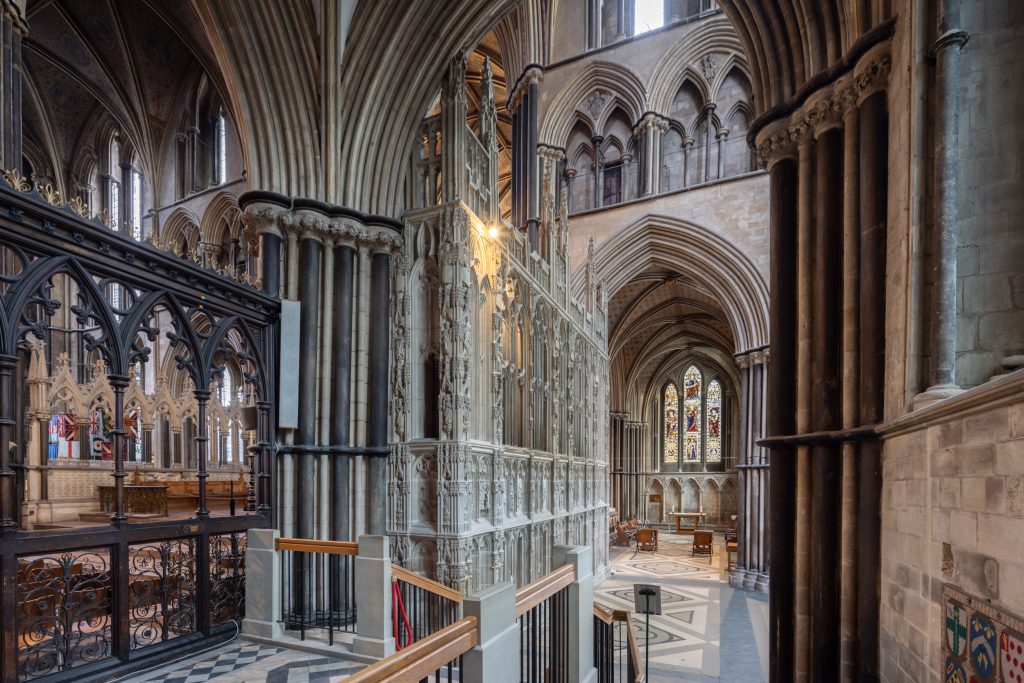
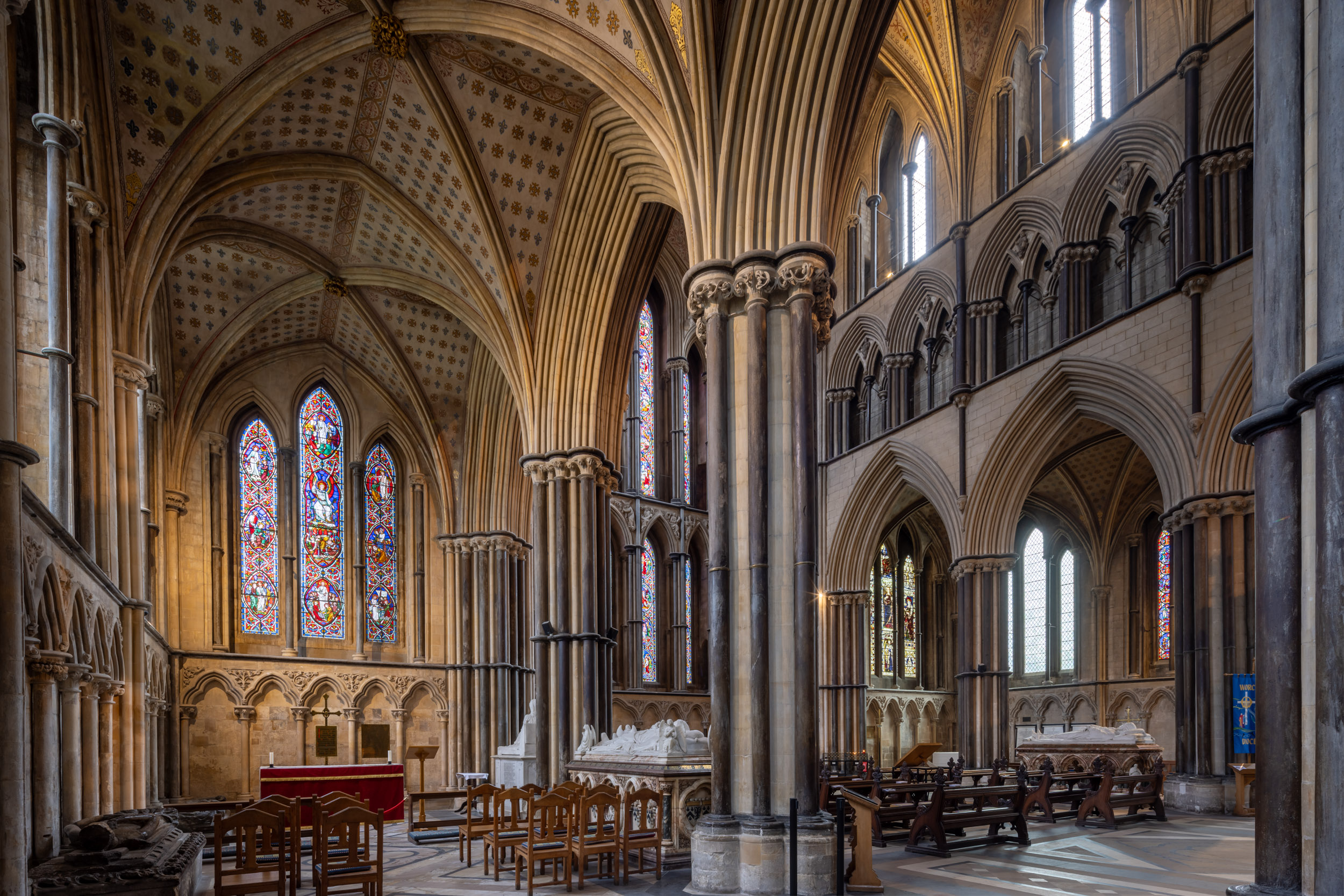
To photograph the cathedrals, I use a variety of tilt-shift lenses, and at times a 1.4x extender, on my Canon R5. These enable me to fully capture the grand architecture that stands around me and without introducing those nasty converging verticals.
I do have a lot of people say that they aren’t needed as the verticals can be corrected in Adobe Lightroom or Adobe Photoshop, which is true, but if you capture them with a regular lens then you have to try and guess how much you’re going to lose on each side of the image before you straighten it up. And this is the massive benefit of the tilt shifts.
When you set your camera up on a tripod, then shift the lens up, it’s a truly magnificent thing to be able to see that Medieval architecture as it should be. And that is upright. Now I will grant you that some of the buildings do have a lean due to the foundations they are sitting on, Salisbury Cathedral is notorious for this, but I would prefer to get as much of it right as possible.
This here is the whole point of getting in contact with the cathedral beforehand. To be able to use a tripod. Not all cathedrals allow you to use a tripod, and if they do, then there is likely a fee involved somewhere along the line.
To photograph a cathedral, it takes me about 3 to 4 hours of work. This might seem like a long time, but if you factor in that you may be waiting for someone to move out of shot, etc, then the time quickly adds up. Patience is what is needed at all times.
If you are given access to the higher levels, then it adds to the time too, as once you get up then you get some really beautiful images that the public don’t get to see. This needs careful thought, as you’re only going to get one opportunity to be up there.
So next time you go into a cathedral, have a good look around and see just how magnificent these buildings are and marvel at how they were constructed all those years ago.
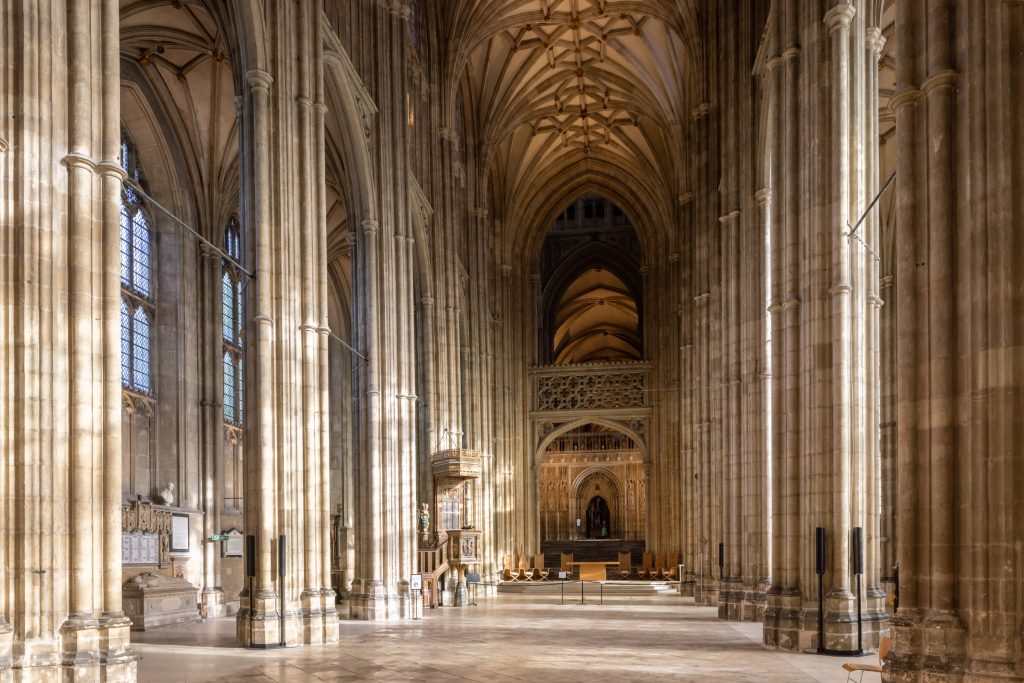
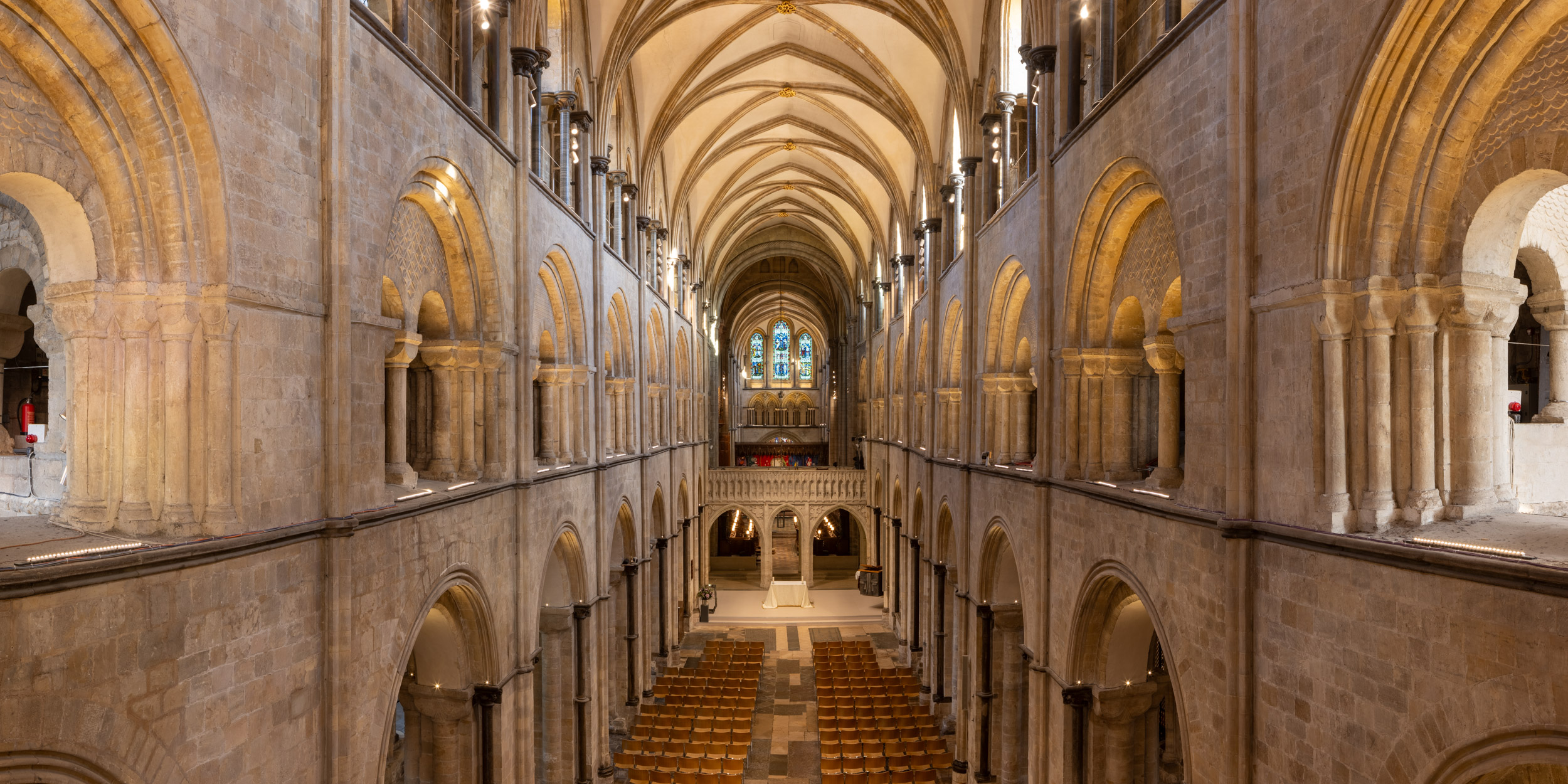
It’s been 2 years since I last visited Uzbekistan. During that time I worked on how to iron out some of the teething problems that were faced during the very first tour that I ran there back in 2023.
Each time I go, the ground agent assigns me a guide. This time it was a guy named Otabek, and he turned out to be just what I needed.
Initially, he was cautious about how it was that he approached the needs of what I wanted for my group during the trip. But by the end, we were working a lot more closely and getting our group some experiences that just can’t be had on other tours.
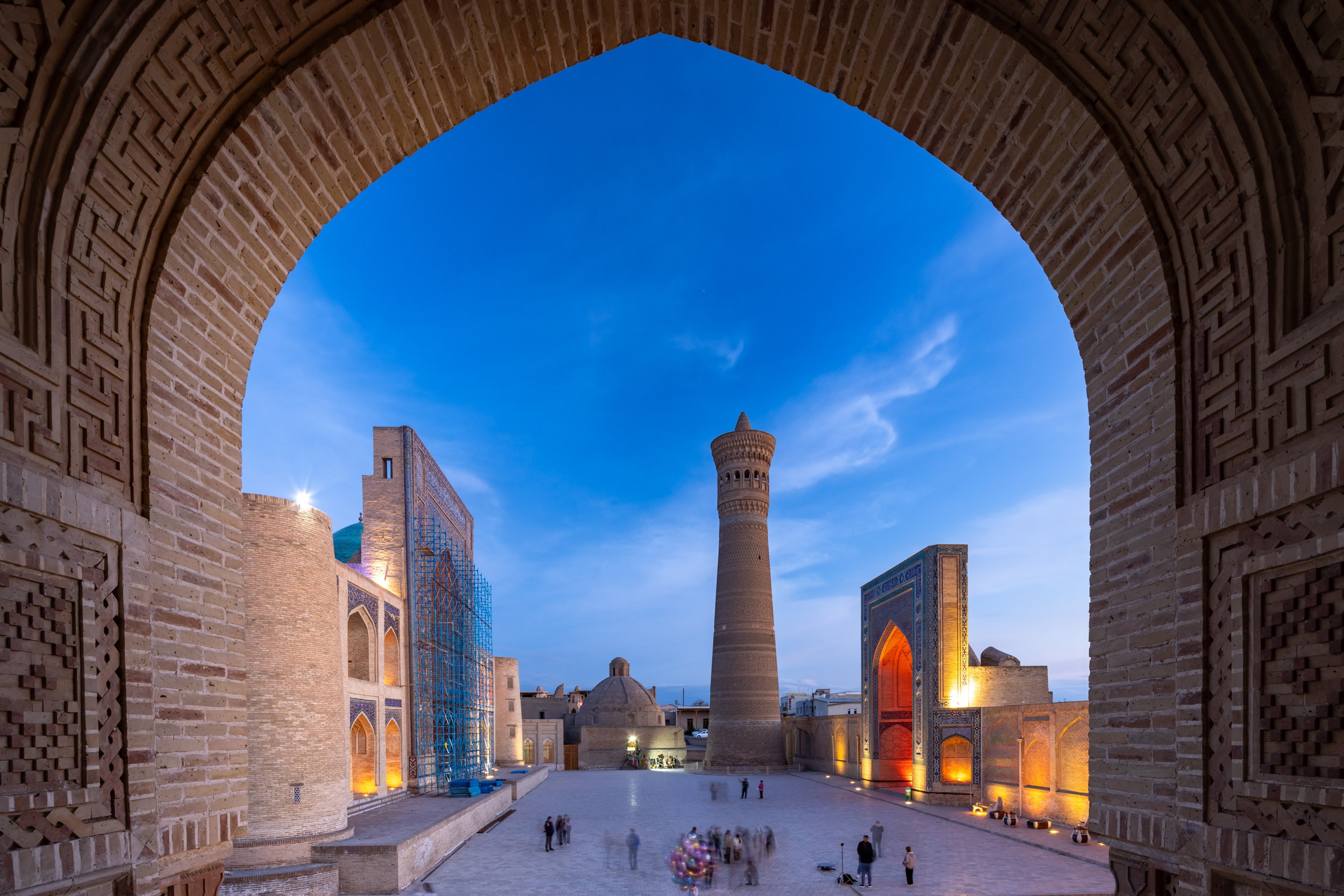
Now, this may sound pompous, but during my first trip there in 2021, I made some important connections which I still keep to this day. These are connections that can help things run that much more smoothly and, most importantly, gain us access to places that the public can’t normally get into.
As always, I arrived a couple of days before the tour started as I wanted to refamiliarise myself with the lay of the land. In addition, I wanted to see if I could scout some places and also get a grip on just who it is that I needed to ask to get the necessary behind-the-scenes access.
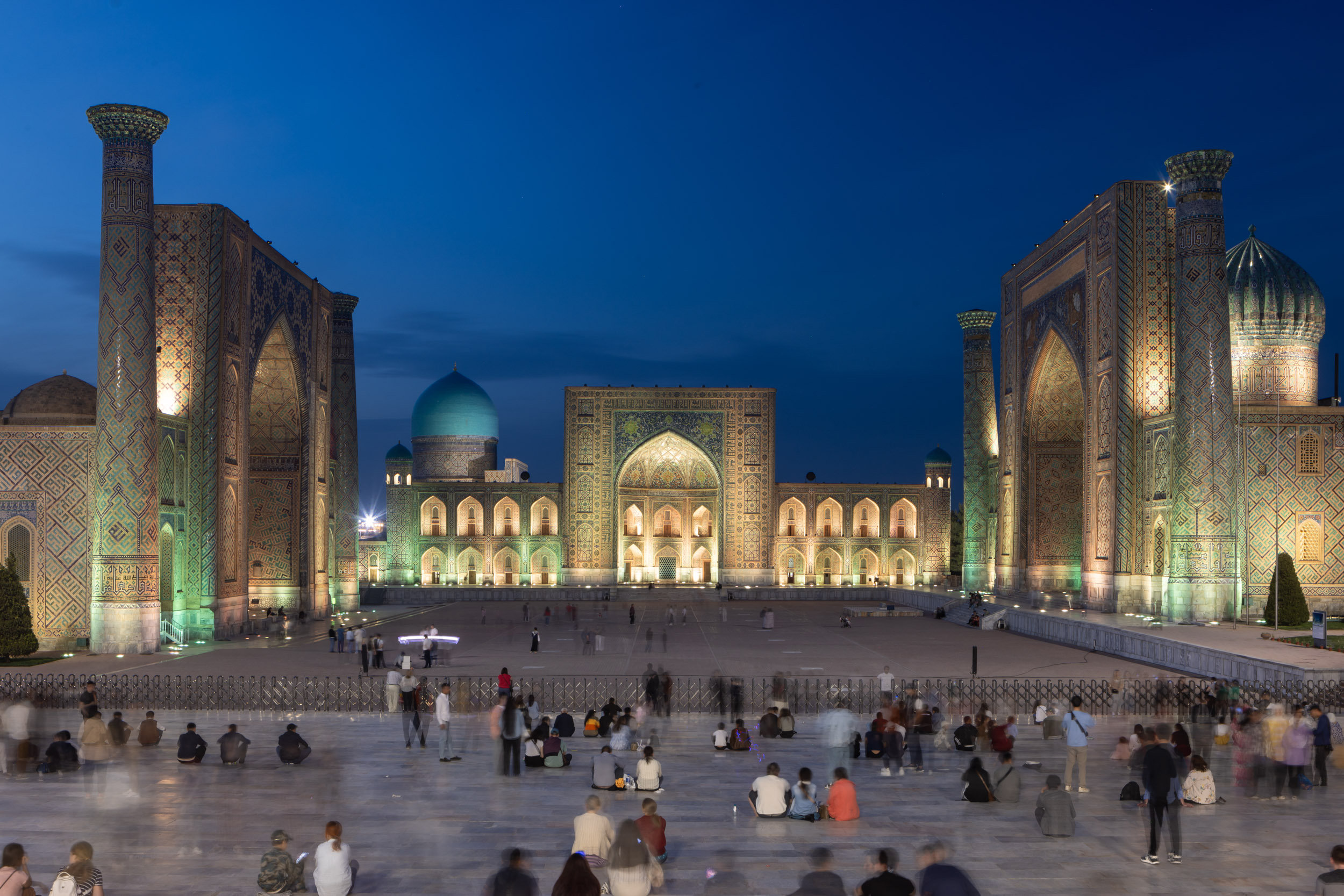
I spent two days prior to the start of the trip in Samarkand and Bukhara. Two cities that have a wealth of stunning architectural interest and history. The Uzbekistan tour isn’t just a photography tour; there’s also the opportunity to learn about its stunning history, which is vast.
The tour itself was to start in Samarkand and then head over to Bukhara. A drive through the desert to Khiva with an overnight stay near Ayaz-Kala before heading to Nukus, then finally ending in Tashkent.
My initial days in Samarkand were incident-free, and the weather was changeable but certainly not a washout. But when the tour started, each day in the city was raining, which meant some deep thinking had to kick into gear to keep everyone happy.
The best thing to do to keep everyone running was to carefully choose places that would result in imagery, as well as get them into the surrounding culture that was all around them.
To me, the best place to go was the Afghan carpet factory on the edge of the city. Here you can meet the people who sit weaving these magnificent works by hand every day. Some carpets take up to 2 years to complete, which in turn comes with a hefty price tag of upwards of $30,000. If you saw them, you’d understand why, as the quality is incredible and, as they demonstrated, you can see more than one pattern emerging from them, depending on the angle you’re looking at them.
Photographically, I used the opportunity to instil in the group how to start getting portraits of the people at the factory, as well as paying particular note as to what is in the background.
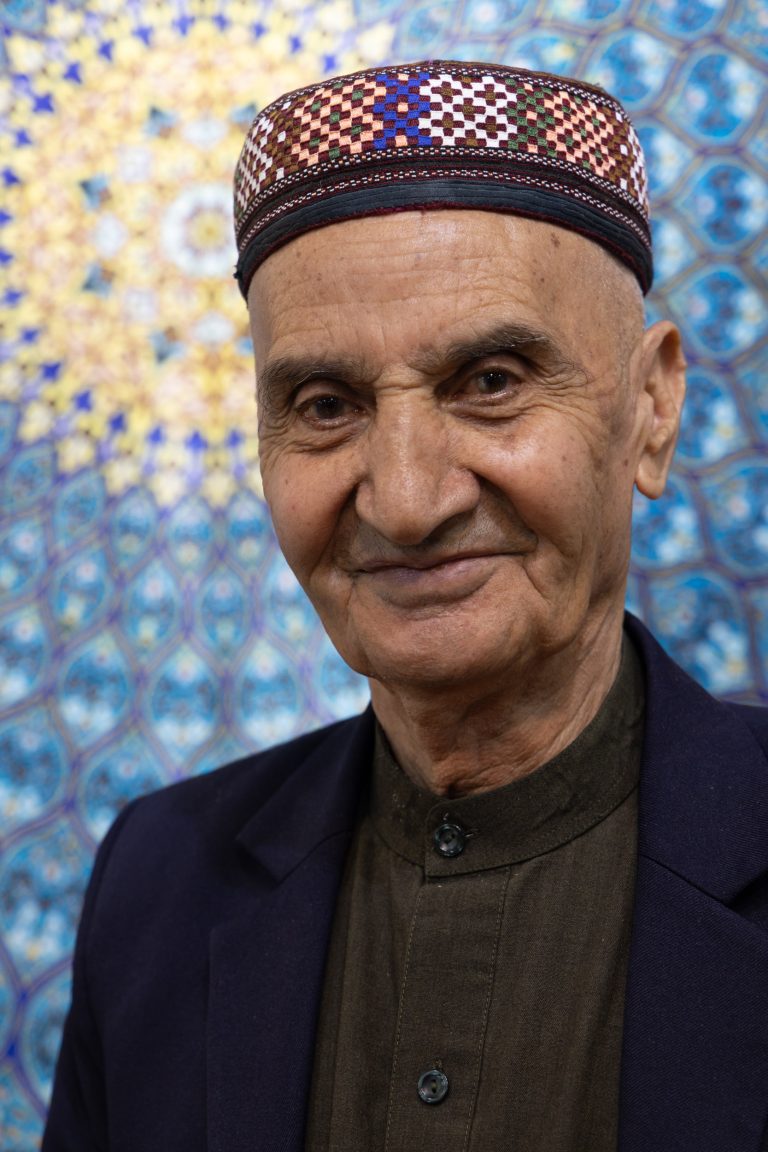
The next day, the rain was continuing to fall from the heavens, and so we decided that we’d do more of the interiors of the magnificent architecture that resides in Samarkand.
At the end of our day, we headed to Registan Square. This was my initial inspiration to visit Uzbekistan in the first place.
One good thing that does come out of the rain tipping it down is that there are fewer tourists around, which means using tripods, etc, is much easier. And the rain itself can add to the magnificent architecture of the square once night falls around as you get the blue hour reflecting in the paving stones.
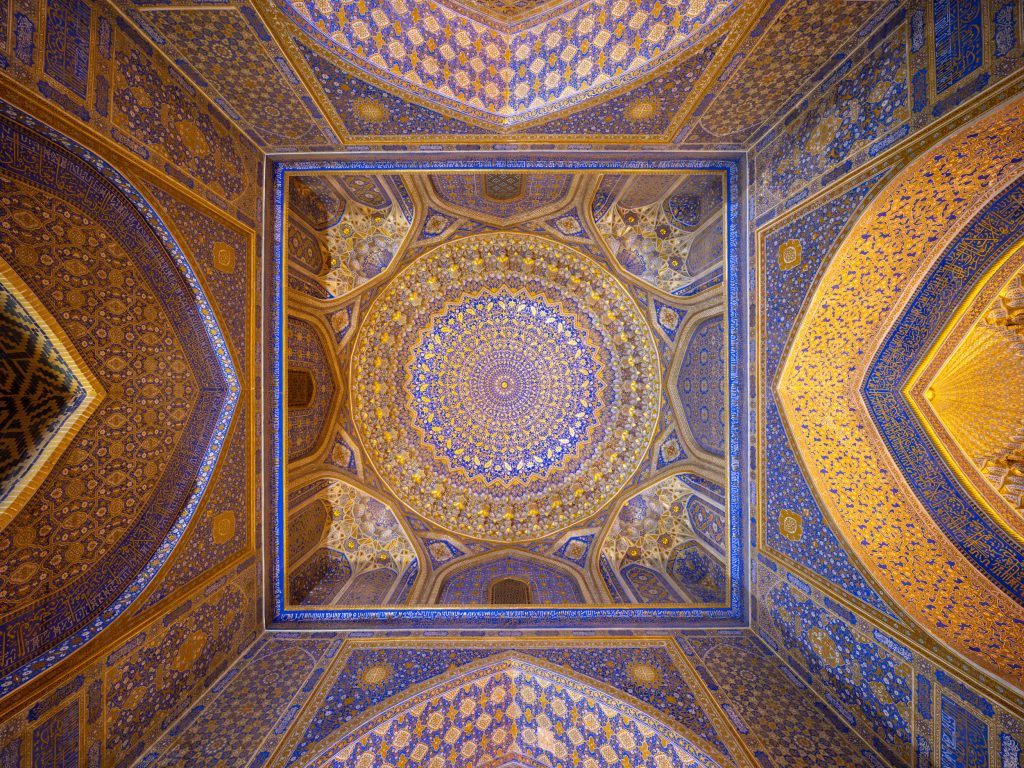

As it was still raining the next day, we quickly shot the Shah-i-Zinda before getting a midday train to Bukhara. We hoped that, with any luck, the weather would be kinder to us as we moved further westwards. And it did!
Our arrival in the ancient city of Bukhara was greeted by the clouds parting and the sun shining through. Our gamble paid off, and we could finally work with ease instead of dashing in between buildings, not getting soaked such as in Samarkand.
In Bukhara, I could do one thing that hadn’t been possible. That was to use my drone to capture the iconic square from above. Now, before you start planning how to capture Uzbekistan from above, you need to understand that using a drone in the country requires special permission. If you arrive in the country with your drone and start flying without the correct paperwork, whether as a tourist or a professional, then you could land yourself in hot water.
From the ground, Bukhara is stunning, but from above, you get a whole other perspective on the city. Combine it with beautiful weather and some nice clouds, and you have a recipe for success.
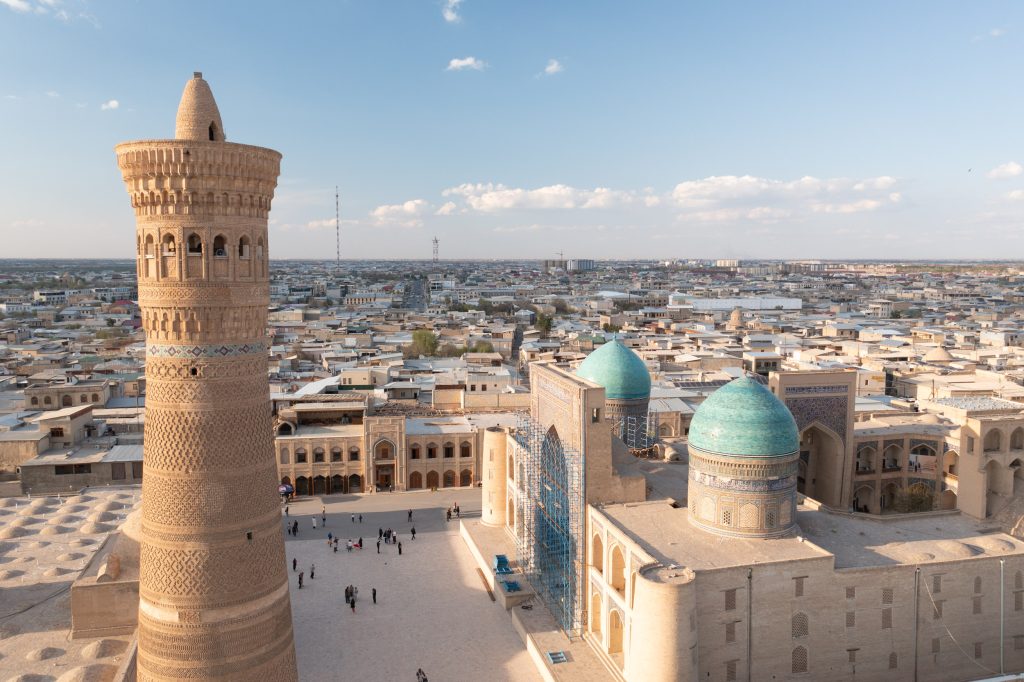
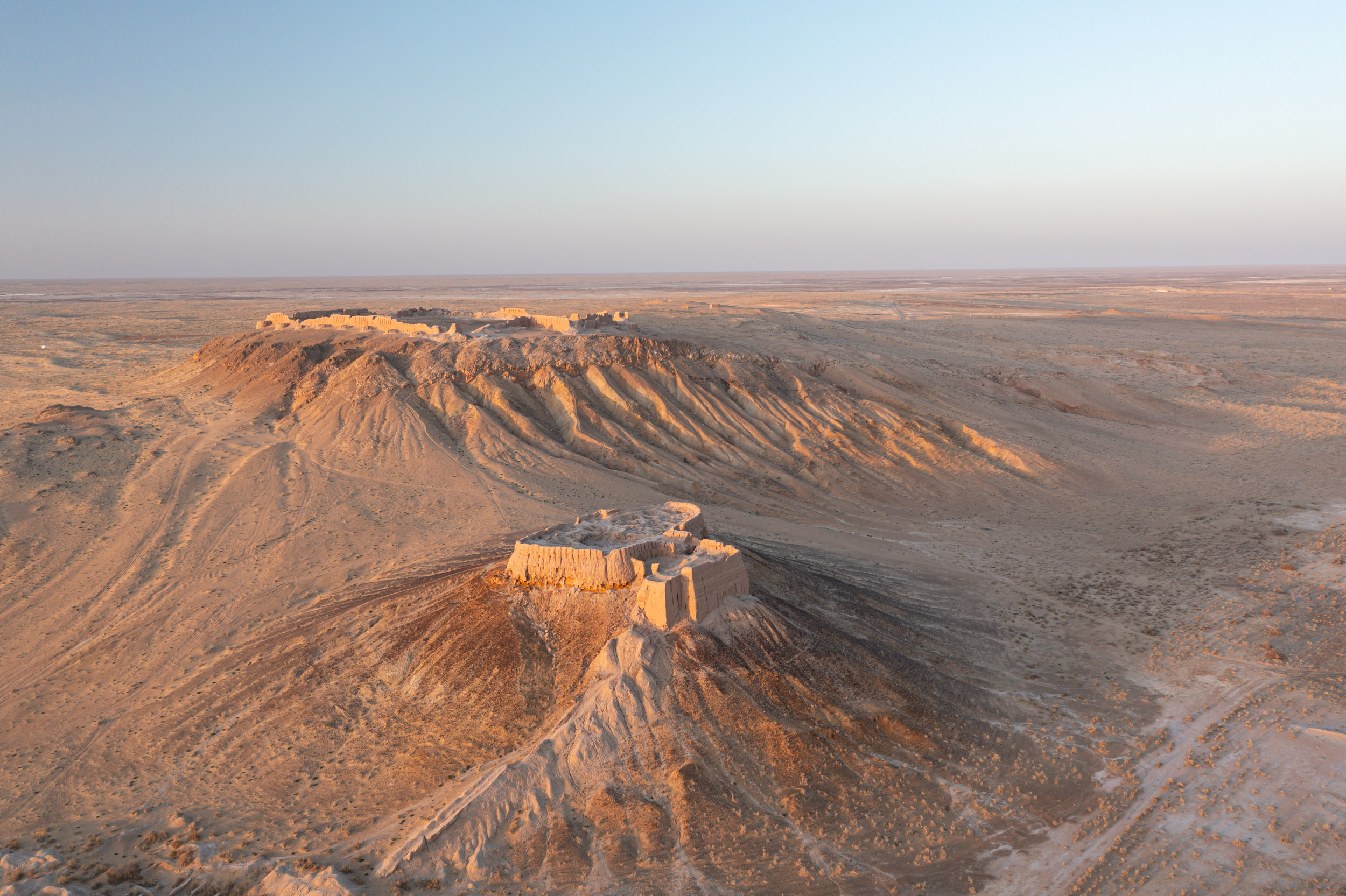
Moving swiftly onwards, though, as I look through my images, I cannot help but admire one that I knew was a winner as soon as I took it. That of the desert fortress complex of Ayaz-Qala, which dates from the 4th century BC.
Again, from the ground, these ancient fortresses look stupendous, but from the air, they are something else. You can get a better sense of the scale as well as wonder in amazement at how the ancient Uzbeks built these marvels out in the desert sands.
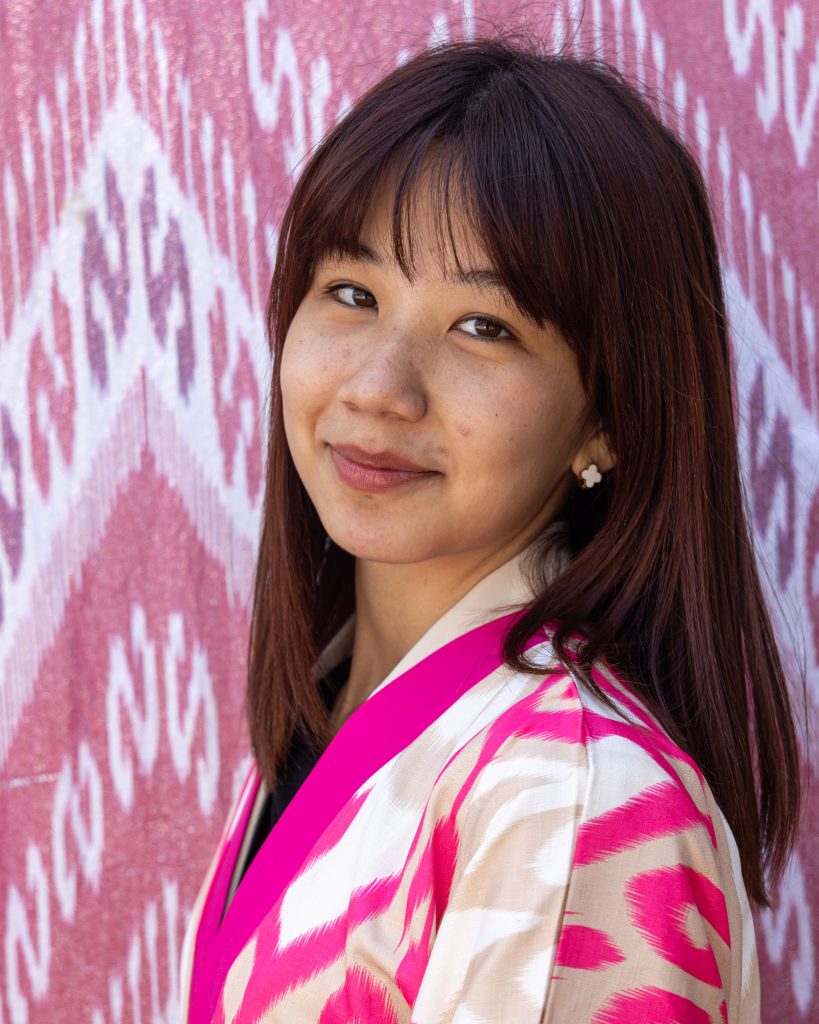
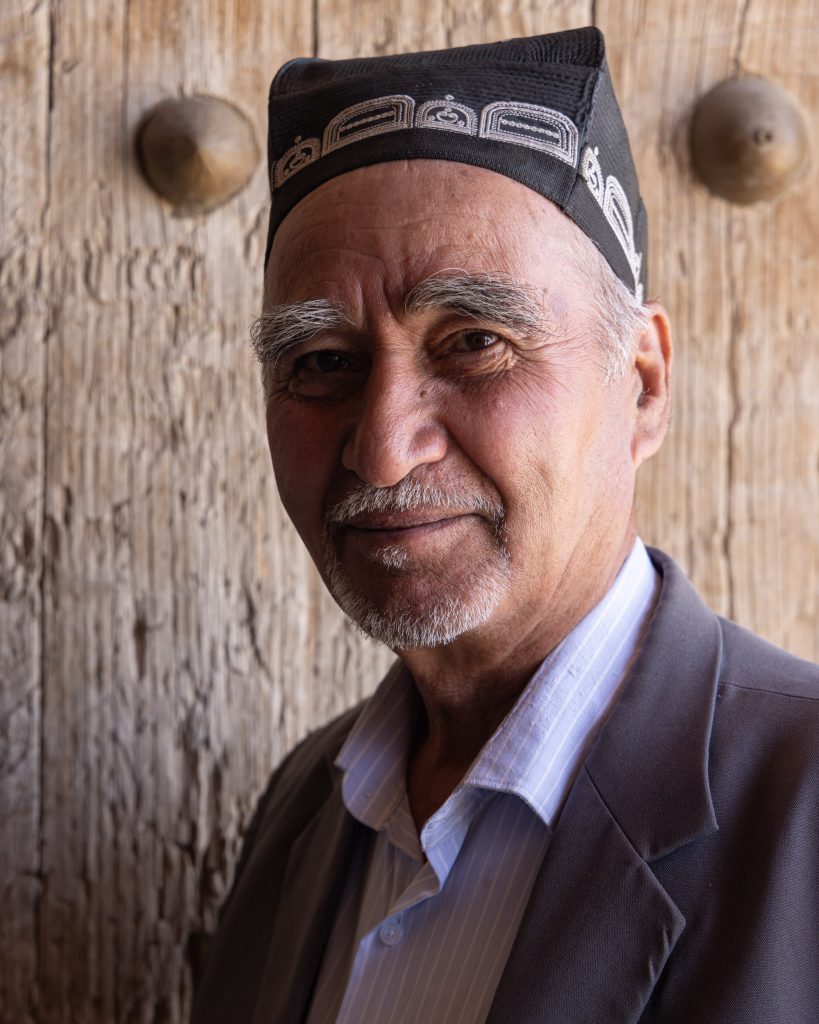
As an aside to all of the architectural wonders, there is the cultural and people side of things, too.
When we departed the city of Khiva, we came across a festival celebrating the end of Eid. We were only going to spend a quick 30 minutes or so there, but it ended up being nearly a couple of hours. The photographic opportunities were too good to miss.
As mentioned earlier, one of the things that I wanted people to do on the tour was engage with the culture and for me, that meant getting up close to people and asking if I could get their portrait.
The festival was buzzing with dancing and music as well as food and drink. But it’s the local people dressed in their traditional dress that gave us the opportunities we were looking for. Combine that with working the light on an old doorway, and a recipe for success was born.
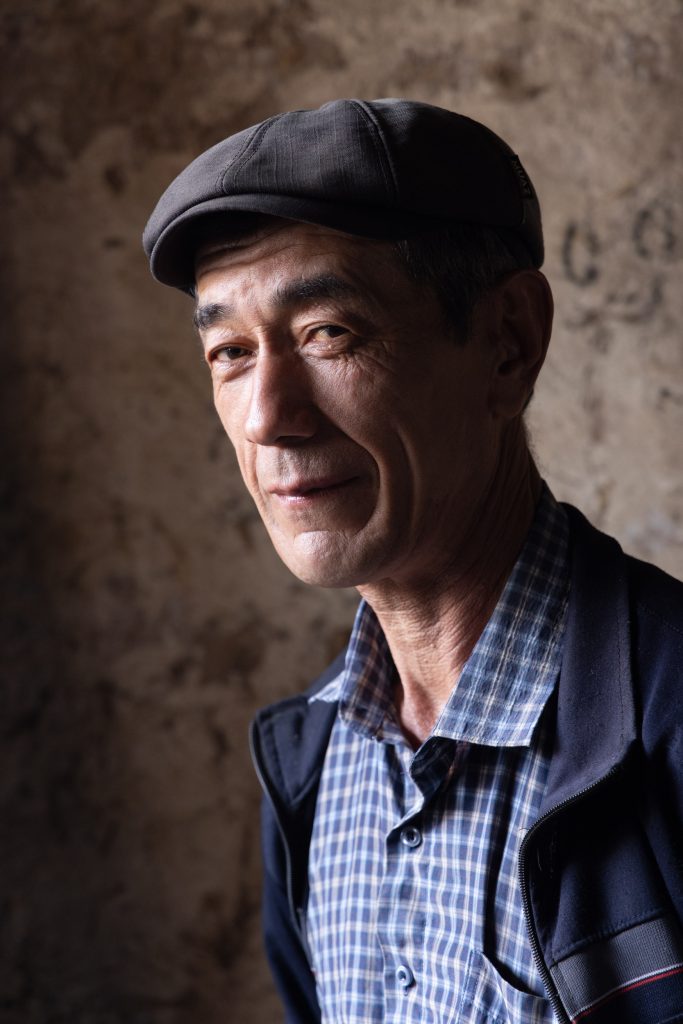
After our stay in the desert, we headed over to Nukus, which is in the autonomous region of Karakalpakstan.
We only had one night here, so we needed to make the best of it. And to me, that was headed out to the traditional yurt makers to capture them at work.
On my previous tour, we had been taken to two different yurt makers. The first one had a much more modern feel to it, whilst the second I visited in 2021 and, to me, held much better opportunities photographically.
Although yurts may seem like a thing of the past, there is still a thriving business for them as a variety of countries order from the makers and have them shipped out.
This more traditional yurt maker is bigger, more spread out and has many things to train your lens on. Sure, you can capture them at work whilst they create the yurts, but for me, it was again about the people.
One guy in particular caught my attention. According to the owners, he was quite the local celebrity because of his smile and gold teeth.
As the group had a history and cultural lesson about the role of the yurt in Uzbek culture, I was busy keeping my eyes out for photographic opportunities, which I could push them towards.
At the end of the tour, the thing I was told the group loved was the healthy balance of photographic opportunities as well as the opportunity to learn about Uzbekistan. That for me was extremely gratifying as I felt my work had been a success.
Although there was a tour to Nepal before Tuscany, I wanted to run through this Italian wonder that I go to each year, because of the spectacular days that we had.
If you’ve thought about a trip to Tuscany, then definitely go. It never fails to enthral all who set their eyes on it. Be it the stunning historic centres of Florence, Siena or San Gimignano, to the rolling landscapes of the Val d’Orcia and Crete Senesi.
Over several nights, our base is in a beautiful 5-star agriturismo. Well, I say 5-star, but for agriturismo, they are rated by sunflowers.
Castello di Spedaletto quite rightly deserve their rating as every year they provide my group with excellent service. The main building out of the three that they own is situated on the edge of Val d’Orcia, about 10km from Pienza. It’s quiet and serene, along with giving us easy access to the surrounding landscapes and picturesque villages.
With regards to a fixed itinerary, I don’t tend to give one out because I like to keep things flexible. I’ve heard of other companies only going to a location once, and if it doesn’t work, then they won’t go back again. This I can’t do.
With tours such as Tuscany, the Loire Valley and the Dolomites, where I’m doing both the guiding and driving, I can keep things that much more flexible. If I think that we’ll be in luck for a particular location, then I’ll ensure we get it. And if we arrive and the weather isn’t up to scratch, which can happen at times, then I build in enough time to get somewhere else.
So here are two examples of what happened to us during Tuscany that, from what the clients told me, made the trip for them.
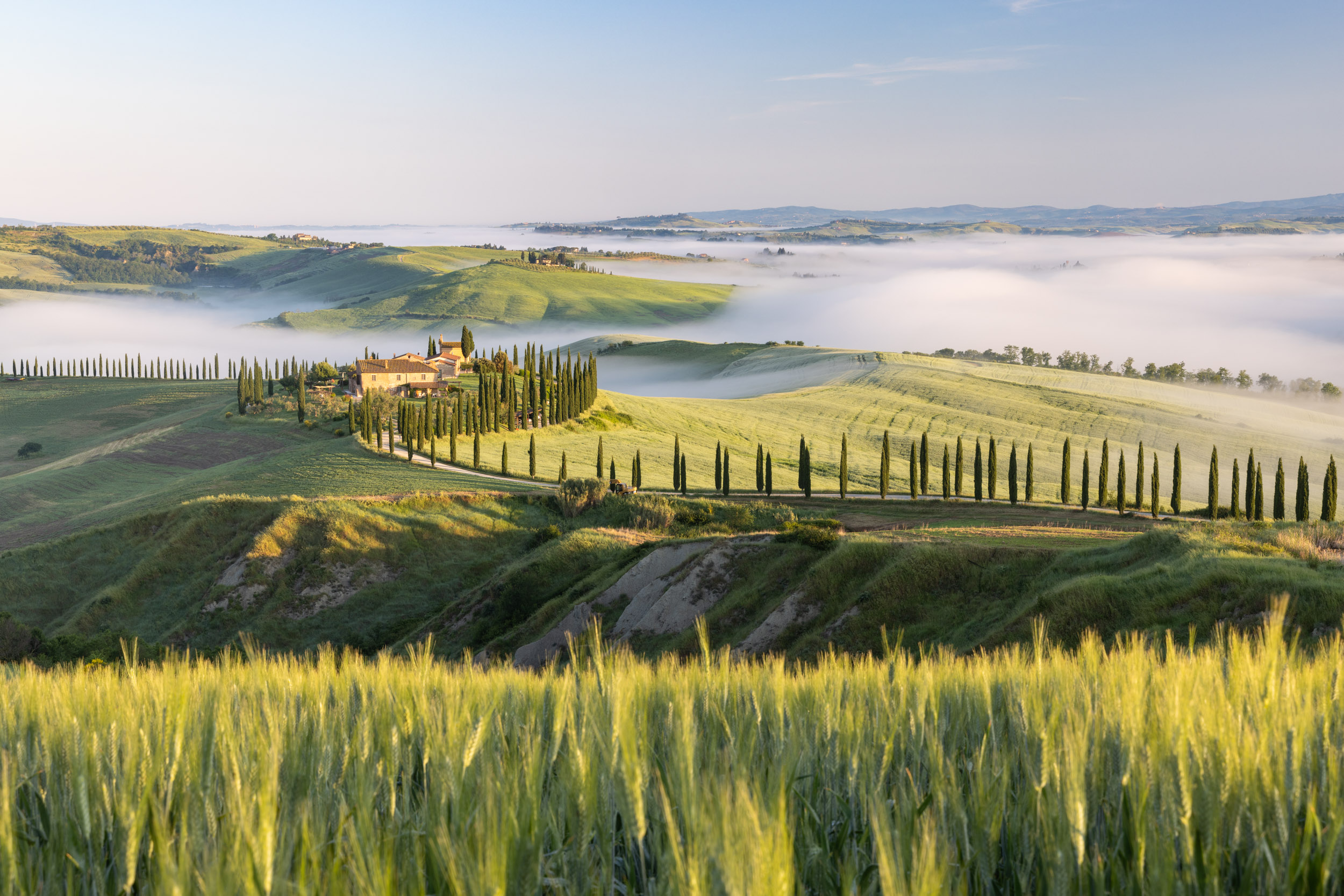
It’s mid-week and we’re up early to catch the famous Il Belvedere farmhouse in all its glory. Earlier in the week, we already had somewhat decent light on it from another location, but on this particular morning, I wanted to capture it from a different perspective. We had in fact, tried this particular spot a couple of days previously, but it came to nothing.
However, despite there being some good mist around on the drive up there, that mist turned into heavy fog once we arrived on location. So thick that it was decided to abandon it. Did we go back to bed? No way! I took them elsewhere, and we met with glorious mist-covered valleys and beautiful morning light as the sun rose in the sky.
Then the next day, we hit the jackpot. We decided to give it one last shot overlooking Il Belvedere. What did we get? The best light and mist that I have ever seen on it in the more than 10 years that I’ve been going there.
The swirling mist over the Val d’Orcia was just enough and was filled with wispy clouds and a pink sky as the sun started coming up in the east.
Persistence and patience will always pay off in the long run. Being able to be flexible in plans will also greatly enhance the possibilities of getting something truly spectacular.
Can I guarantee it for next year’s Tuscany photography tour and workshop? No, but we’ll give it a damn good try!

And if you’ve enjoyed reading the June 2025 newsletter and want to get it before it appears on my website, then feel free to sign up.
Don’t forget to use these links to “like” or “follow” my Facebook, YouTube and Instagram pages where I upload new images and vlogs. This is the best way to keep up to date with my latest work.